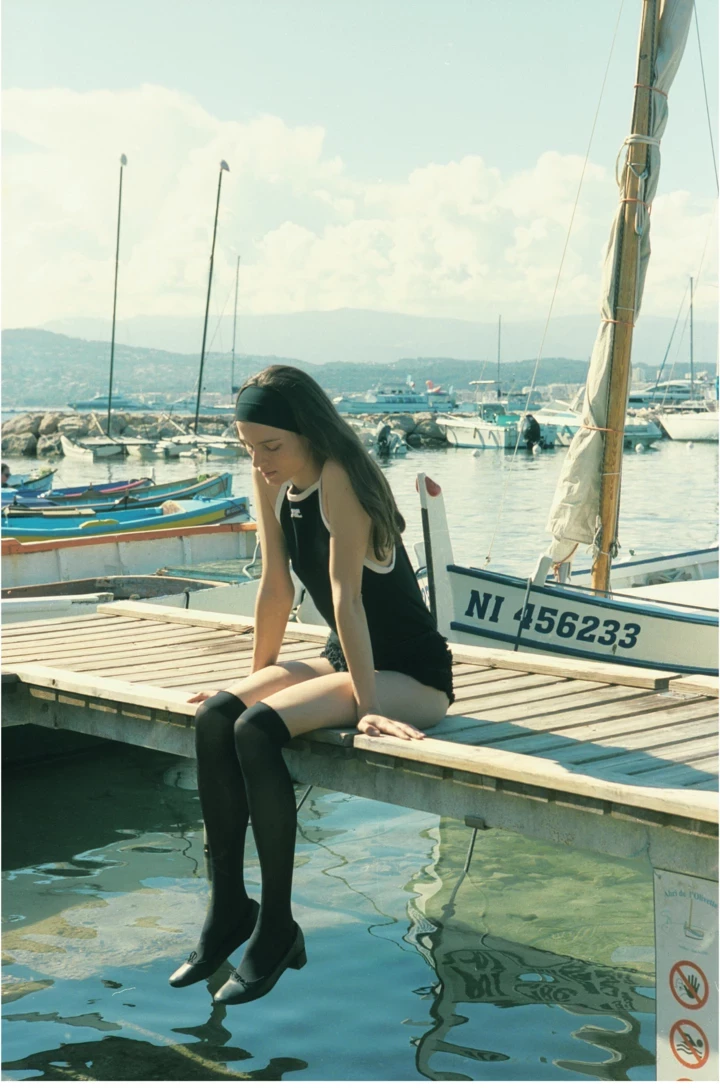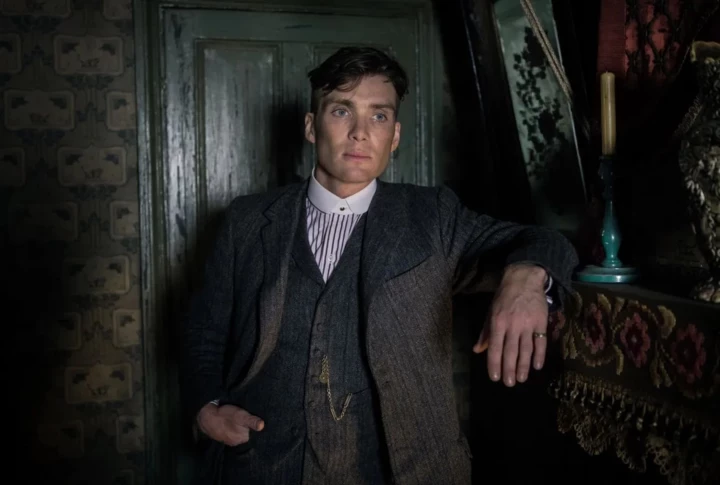
Save this storySave this storySave this storySave this story
The subject of “Civil War” is so clickbaity that it’s easy to forget that it’s a movie, with the form and the aesthetics of a movie, rather than a think piece or some warning sounding from the op-ed pages. Clamorously making its claim on viewers’ attention by subject matter alone, rather than by artistry or world view, the film is a kind of advertisement for itself. No wonder, then, that this dystopian thriller—in which Texas and California secede and wage war on Washington, D.C., to oust an apparently dictatorial President—is being discussed largely from a political perspective. The most common critique is that the movie’s writer and director, Alex Garland, films a visually recognizable world but downplays real-world politics, leaving out the particular ideologies that make this catastrophic conflict seem a part of our time. So far, so true.
But “Civil War” cries out for close attention to its directorial aesthetic and its cinematic form, because its main characters, being journalists, are intimately concerned with how the conflict has arisen and how it is represented. The protagonist is a war photographer named Lee Smith (Kirsten Dunst), who, while covering a face-off between protesters and police in New York, protects and counsels an enthusiastic tyro photographer, Jessie (Cailee Spaeny), who’s underexperienced and underequipped. After photographing the street battle, the pair meet up with Lee’s colleague Joel Martinez (Wagner Moura) at a hotel that the press corps is using as a home base. With secessionist troops, the so-called Western Forces, advancing toward Washington and the remains of the federal government offering little resistance, Lee and Joel hatch a plan to reach the capital just ahead of the rebels. They hope to get to the President (Nick Offerman)—Joel in order to ask him questions, Lee in order to get the money shot when he is captured or killed. Jessie charms Joel into including her in the journey, too, and the group also comprises an older journalist named Sammy (Stephen McKinley Henderson), who reports for “what’s left of the New York Times.”
Essentially, “Civil War” is a road movie. The quartet’s experiences en route—the horrors that they witness, the dangers into which they intrepidly plunge—provide Garland with a handy way of establishing what’s going on in America during its new war of secession: the battles, the aftermaths, the destruction, the breakdown of civic institutions normally taken for granted, the absence of any authority to stop angry people with guns from exerting local power ruthlessly. The journalists see a refugee camp, checkpoints, torture, point-blank executions, and a pit of corpses; they come under fire themselves, risking their lives for an image or a quote or for one another. Their solidarity in the face of death establishes their trade as a quasi-military calling. Thus, “Civil War” stands in two places at once: it bears witness both to a fictive American fate and to the actual contemporary profession of news reporting. The movie is studded with lines and moments that stand out as virtual headlines to encapsulate Garland’s view of that profession. Though one should be wary of assuming that a character’s words stand in for the filmmaker’s, it’s hard to avoid the conclusion here, given the number of times Lee seems to float free of the setting and to deliver a line as if directly to the audience: “Every time I survived a war zone, I thought I was sending a warning home: ‘Don’t do this.’ But here we are.” The film views journalism admiringly, as a necessary endeavor, but also skeptically as a largely impotent one.
“We don’t ask questions,” Lee says about her work. “We record things so other people can ask the questions.” Garland does things differently. Though he may not ask questions, exactly, he certainly doesn’t wait for other people to do so, either. Instead, he warns and asserts and affirms; in creating a dystopian American political fantasy, he suggests that the realities on view in present-day America aren’t sufficiently horrific to make his points. The monitory near-future of “Civil War” is presented as a possibility latent in contemporary politics, like a monster sleeping under ice. In that sense, it’s of a piece with Garland’s phantasmagorical tweaks to reality in his other three features, “Ex Machina,” “Annihilation,” and “Men,” but those each entailed some supernatural or super-technological aspect, whereas “Civil War” is merely an exaggeration of current circumstances, an extrapolation from them. It is therefore the most realistic of his films and also the one where the element of warning blares loudest. Yet his warning comes at a fascinating one-step remove. It isn’t a humanistically Audenesque warning to viewers that “we must love one another or die” (quoted in one of the most powerful warnings ever put on film); it’s a specific warning not to vote for would-be tyrants lest they be catastrophically sic-sempered, engendering social breakdown and rampant bloodshed. But the overarching warning of “Civil War” is anchored in its drama about the making of images: it’s a grim and loud warning that the media is doing a terrible job of revealing and publicizing the grave dangers looming, that news reporting is proving grossly inadequate to the current, dire moment.
The movie’s very subject is the creation of images, the telling of stories in images, the ability to conjure realities persuasively in images, and, in Garland’s view, the war photographer falls short in every one of these regards. That’s why it’s fascinating to consider just what Garland does, or doesn’t do, with the images that his two photographer characters create. The other night, I had occasion to rewatch Ira Sachs’s extraordinary drama “Passages,” a story about the romantic tangles of a German filmmaker in Paris, and I was again impressed that Sachs creates no film-within-a-film to attribute to the character, instead conjuring the tone and power of the protagonist’s art by depicting his behavior on set. By contrast, Garland himself does the work of his two photographers, creating sequences that unfold as if through the viewfinders of their cameras and often culminating in freeze-frames that depict the photographs they take.
Garland never explores the boundless dramatic and analytical possibilities that these images offer. When Jessie (who shoots on actual film) develops a roll on the road, she shows the work to Lee, who calls one of the shots great. A filmmaker more alert to the material might have Jessie ask what makes this particular shot great, or have the two colleagues at least discuss the photograph, giving the picture ample screen time and seeing it in detail, letting it become a subject in itself. No such luck. Maybe as one or the other photographer peers through the viewfinder and prepares to snap the picture, the soundtrack would include a little internal monologue about what she’s looking for and when she thinks she’s got it. Nothing of the sort. Neither dialogue nor monologue brings anyone’s analysis of any image—their own or someone else’s—to the movie, which means that the very essence of its protagonist’s quest is left undramatized. Jessie brings up a photo that apparently launched Lee’s career while she was still in college, of an event called “the Antifa massacre”; the image is neither shown nor discussed. The only still shot by either woman to remain onscreen for more than a blink is one that looks likely to become famous. What matters to Garland is an image’s success, not how and why it achieves its fame.
The image in question, documenting news of major importance (no spoilers here), is, essentially, a staged one: the event in question is part of the characters’ experience, but the people in the photograph are posing for the photographer, looking at her and smiling into the lens to acknowledge what they’ve done. It’s easy to imagine a movie in which the issues surrounding what the photograph depicts become the subject of discussion in newsrooms, in political circles, in homes, in cars and bars. Such a work—able to show an image becoming iconic, to dramatize its power and analyze the basis of that power—might come to be seen as a classic film about image-making, a modern counterpart to Antonioni’s “Blow-Up” based on a new understanding and a new era of media politics.
But Garland offers no more reflection about his characters’ images than he does about his own. He films war and horror without inhibition, squeamishness, or self-questioning about the appropriateness of style, form, tone, or substance; he aims only for effect, and does so shamelessly, although I, as a viewer, was at times ashamed for him. Much of the violence is filmed in ways that are crudely manipulative and vulgarly thrill-stoking; in particular, a sequence of point-blank summary executions is done in slow motion, the victims’ bodies twitching and jerking with each impact as if Garland wanted to summon the spirit of the ending of “Bonnie and Clyde” without its audacious relentlessness and its gory intimacy. Another scene of paramilitary action is augmented by hip-hop music on the soundtrack, as if conveying battle as a playful thrill—but whose? The characters’ (and which ones), or Garland’s own?
Such picturesque and emotionally juiced renderings of violence and horror give the movie a pornographic air. Pornography succeeds by gratifying a universal itch, and “Civil War” seems bent on something similar—relying on ingrained fascination with fantasies of violence to attract viewers. It does so thoughtlessly, however, not to make people consider realities that violent fantasies imply but simply to stoke excitement and create a captive audience for his point of view. For Garland, nothing succeeds like success; all that matters are the numbers. He has a warning to get out, and he gets it out with a hectic fervor that proclaims his intentions. I defy any viewer to deny which side of the onscreen conflict Garland stands on. For all the film’s quietism regarding the particulars of secession and rebellion, “Civil War” is a piece of propaganda, a veritable recruiting video for its own rebels. ♦
Sourse: newyorker.com







